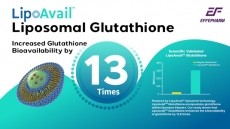Natraceutical sterilisation preserves antioxidants, heat-sensitive compounds
involving supercritical CO2 that is said to remove contaminants
without compromising functional compounds, as well as reduce
processing costs.
The Valencia-based company, which moved this week to patent its discovery, says that it can lower costs since the new process can remove microorganisms at the same time as extraction, thereby combining two steps into one.
General director Honorato Monzo said that the innovation "opens a new field in food research and development".
While the company has so far applied the process only to its high polyphenol cocoa derivatives, it expects that it may also be applicable to the sterilization of other solids - for instance flavours and fibre from cocoa, in which it may preserve proteins and other compounds that would otherwise be removed at high temperatures.
The company is also open to collaboration or licensing the technology to others in the food sector looking for a clean method to preserve functional compounds that are sensitive to temperature.
R&D specialist Elena Cienfuegos explained to NutraIngredients.com that the typical industry sterilization process for antioxidants involves heating the ingredient using a dry heat to 130 degrees for 20 to 30 minutes. This may result in loss of 30 to 50 per cent of the polyphenol count.
Natraceutical had previously used a different method to reduce loss using a vacuum steam with water at a temperature of 121 degrees for one minute or 30 seconds - although Cienfuegos was unable to reveal specifics of the loss reduction.
However the new process involves temperatures of only 60 to 80 degrees, and is said to eliminate polyphenol loss; the company tested the total polyphenol level using the spectrophotometric method of Folin-Ciocalteu (Singleton y Rossi, 1964). "We have proved that there is no loss in the total polyphenols level after the sterilization process with CO2," said Cienfuegos. Moreover, HPLC (high performance liquid chromatography) and a DAD detector showed that there was no loss in the total flavanol content (catechins, epicatechin, procyanidin B1 and procyanidin B2).
Natraceutical said that the process does not leave behind any kinds of residue, since the CO2 returns to its gaseous state once the supercritical conditions are removed.
The patent Natraceutical is soliciting on this technology is the fifth it has filed this year. Last month it made an application for the cocoa-derived CCX-70 ingredient, which has an ORAC value of 18,000 as a result of the CO2 sterilisation process.













